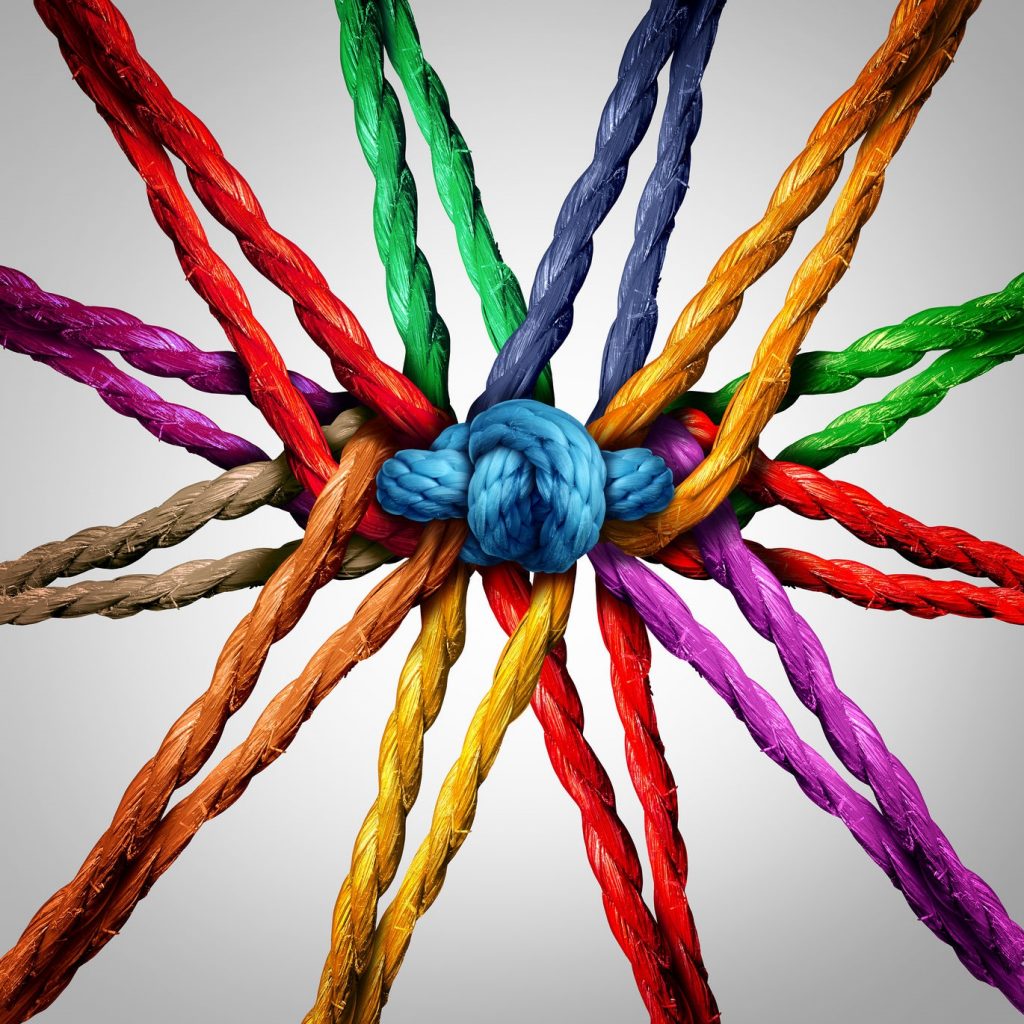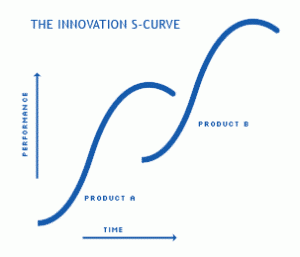
INNOVATION
When does innovation occur? Rarely, I would suggest. Most organisations don’t innovate unless they are threatened, out of necessity. If things are going along well, why innovate?
The theory of the S Curve (or innovation curve) suggests that the performance of a product or an organisation improves over time as you refine and get better at it. But then decay begins, followed by a rapid decline. We see examples of this all the time. Once-great organisations disappear – think Kodak. The average life span of a company is now a mere 10 years.

More often than not organisations fail to see the tipping point, the point at which their product reaches the end of its time in the spotlight. Only when they realise that they are in decline (falling sales, poor product reviews, etc.) do they realise that they have to innovate or perish.
The good organisations realise that they have to innovate before their current product reaches its pinnacle.
So how does innovation occur?
The secret is in your people.
“When groups work well, the result is usually a product of more than the sum of individual achievements.”
Humans are naturally creative beings. We all have imaginations. We love to dream. But when we come to work (or school) we leave the dreaming for lunchtime and get on with the business of our job. The boundaries for our work are put in place and reinforced with KPIs, accountability measures and deadlines (and for schools, timetables and subject content that has to be delivered because it will be on the “exam”).
The purpose of St Paul’s School is to prepare resilient, agile global citizens with an entrepreneurial mindset, a spirit for innovation, and a heart for servant leadership. We have this purpose because we believe it is our ethical responsibility to prepare young people for an uncertain future.
Innovation, like creativity, occurs when control is loosened and people are allowed to dream, to ponder on the “what if”, and take risks with ideas that could, at first glance, appear contrary to the organisation’s key objectives.
Teachers at St Paul’s recognise this. They know that an education truly worth having is one that doesn’t just conform to the directives of a government seeking to improve systems with control measures, but is one that allows dreaming to occur.
At St Paul’s School we are truly innovative in the way we deliver education. Our key point of difference is what we term “The Realms”. No other school can attest to this.
Five Heads of Learning have researched, developed and rolled out ways of teaching that embed entrepreneurialism, creativity, innovation (design thinking), global sustainability and inquiry into every classroom from Pre-Prep to Year 12. This is achieved within the constraints of the National Curriculum and the mandated goals that have to occur.
The Realms effectively loosen control, empowering students to identify problems and apply ways of thinking that create innovative solutions. When control is loosened and students are empowered, real learning occurs.
It is mind-blowing when this is done successfully: We see the true potential of our young people and their capacity to solve the problems of our world.
Dr Paul Browning
Headmaster
